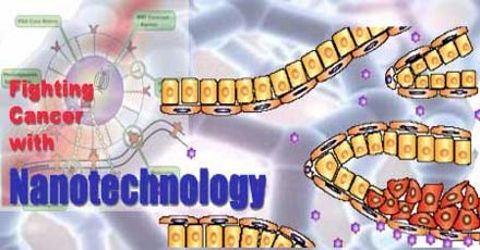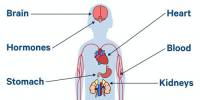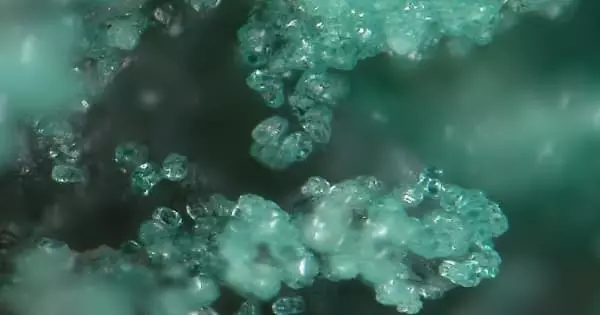Nanotechnology in Cancer Treatment
The use of nanotechnology in cancer treatment offers several exciting promises, including the possibility of destroying cancer tumors with least damage to healthy tissue and organs, as well as the finding and removal of cancer cells before they form tumors.
Most efforts to progress cancer treatment through nanotechnology are at the research or advance stage. However the effort to make these treatments a actuality is highly focused. For example, The Alliance for Nanotechnology in Cancer, established by the U.S. National Cancer Institute, is fostering innovation and collaboration among researchers to resolve some of the major challenges in the application of nanotechnology to cancer. In addition, there are many universities and companies worldwide working in this area. It is possible that these efforts will result in cancer becoming being nearly eliminated in a decade or so, in the same way that vaccines nearly eliminated smallpox in the last century.
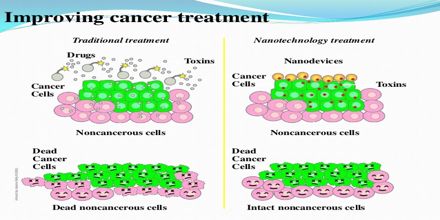
Cancer Treatments Under Development
A new cancer treatment that uses nanotechnology has shown “astounding” results in mice.
Scientists believe the technique could offer a treatment for metastatic cancer of the lungs and liver, two of the main causes of death for patients with a wide range of incurable cancers that have spread around the body. The researchers developed a method of delivering anti-cancer drugs to these vital organs using a “nanoparticle generator” that can bypass a tumour cell’s ability to develop drug resistance. Tests on mice with incurable breast cancer that has spread to the lungs shows that half of them were effectively cured of the disease after eight months of follow-up – equivalent to 24 years of long-term survival in humans.
If the finding were to be replicated by other researchers, it would represent a new milestone in cancer therapy, coming just weeks after breakthroughs in cancer immunology where the body’s own immune defences were shown to be capable of launching an attack on spreading tumours.
The latest treatment is based on injecting the patient with a porous silicon material that has been absorbed with an anti-cancer drug. After injection into the blood stream, the material is carried to the site of a tumour where the silicon breaks down to produce cancer-killing nanoparticles.
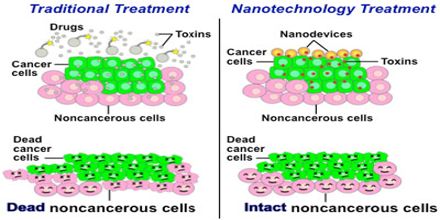
Impacts on Cancer
Nanotechnology can provide rapid and sensitive detection of cancer-related targets, enabling scientists to detect molecular changes even when they occur only in a small percentage of cells. Nanotechnology also has the potential to generate unique and highly effective theraputic agents.
Nanotechnology in Cancer Treatment
Cancer therapies are currently limited to surgery, radiation, and chemotherapy. All three methods risk damage to normal tissues or incomplete eradication of the cancer. Nanotechnology offers the means to aim therapies directly and selectively at cancerous cells.
Conventional chemotherapy employs drugs that are known to kill cancer cells effectively. But these cytotoxic drugs kill healthy cells in addition to tumor cells, leading to adverse side effects such as nausea, neuropathy, hair-loss, fatigue, and compromised immune function. Nanoparticles can be used as drug carriers for chemotherapeutics to deliver medication directly to the tumor while sparing healthy tissue. Nanocarriers have several advantages over conventional chemotherapy. They can:
- protect drugs from being degraded in the body before they reach their target.
- enhance the absorption of drugs into tumors and into the cancerous cells themselves.
- allow for better control over the timing and distribution of drugs to the tissue, making it easier for oncologists to assess how well they work.
- prevent drugs from interacting with normal cells, thus avoiding side effects.

Technology is one of key words of in people’s lives. In the near future, a subdivision of technology which is nanotechnology will have an important role. Bio-products, tools, devices, materials are influenced from consequences of research and developments on nanotechnology. With nanotechnology; more useful devices, better drugs for diseases, more appropriate materials for construction will be developed. Nanotechnology will also affect medicine and other life sciences. The numbers of research in cancer treatment with nanotechnologically modified drugs are increasing day to day and have had some good results on this issue. Nanotechnological improvements can be used for cancer patients; because nanotechnology can be used for better cancer diagnosis, more efficient drug delivery to tumor cells, and molecular targeted cancer therapy.
First of all, nanotechnology can be used for better cancer diagnosis. One of the main usage fields of optical nanoparticles is to allow better cancer detection. To start with, classical methods that are used in diagnosis have limitations. Classified methods such as X-rays, tomography or mammography require using mutagenic agents on cells that cause cancer, too. Sadoqi et al. express that using harmful substances and X-rays in cancer diagnosis are also related to the causes of cancer. To eliminate these concerns, optical nanoparticles in diagnosis is possible technique that can be used. This technique works with special dyes to interact with tumor cells and optical nanoparticles can be detected. According to Sadoqi et al., preparing a nanoparticulate drug system which has to ability to be photo excited to produce singlet oxygen for detection and therapy is better than classical systems. Such interaction shows that, the detection of cancer with optical nanoparticles is new and developing subject, but it has considerable benefits for diagnosis.
